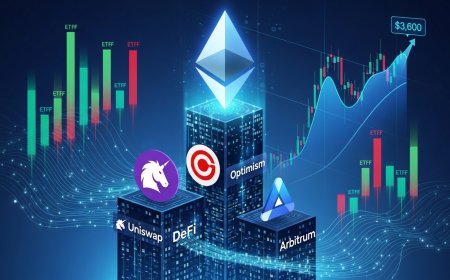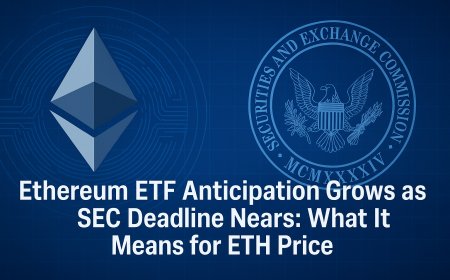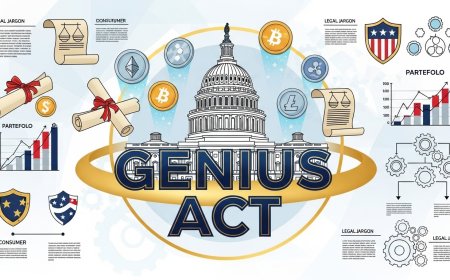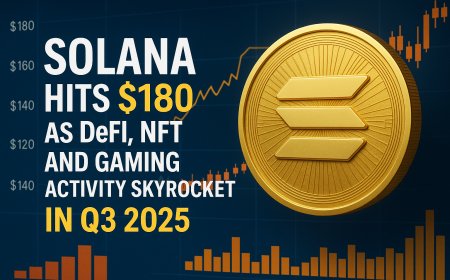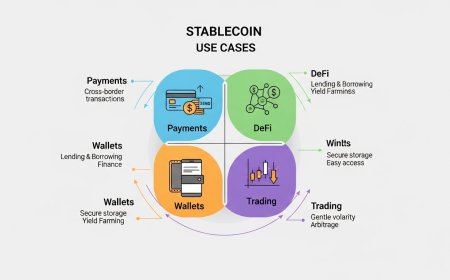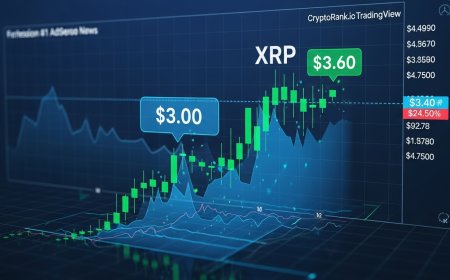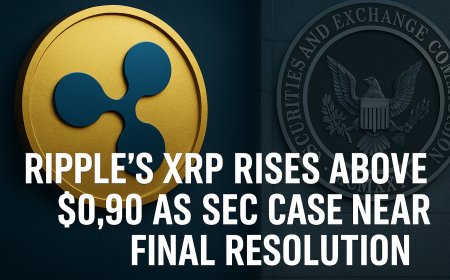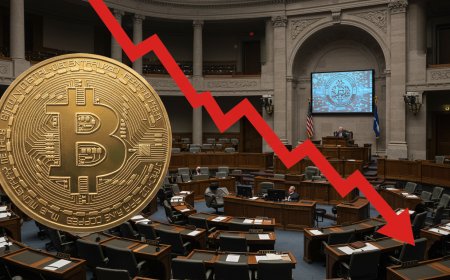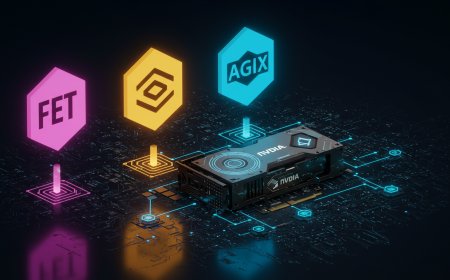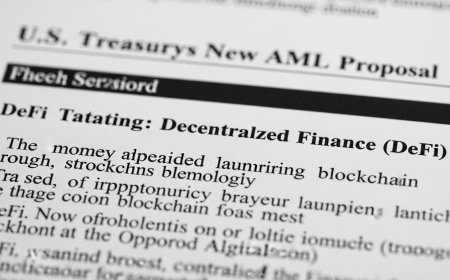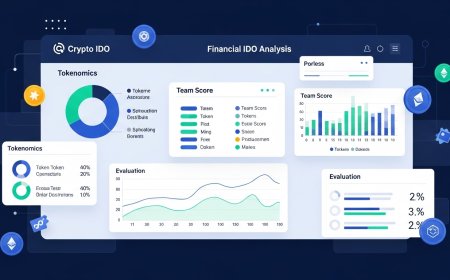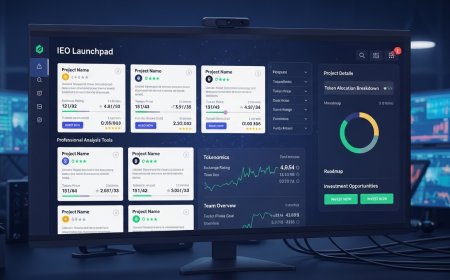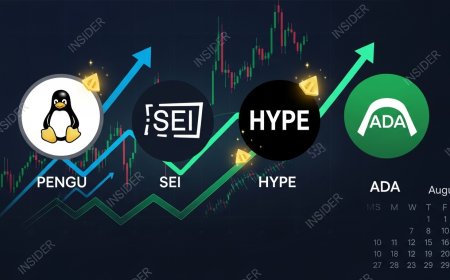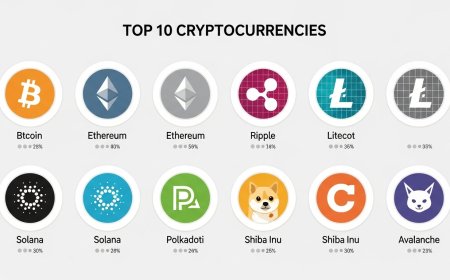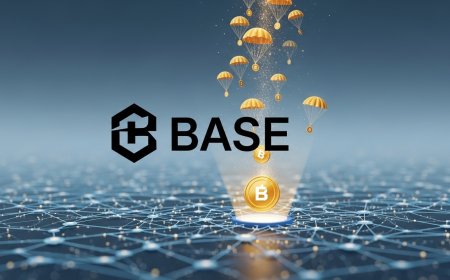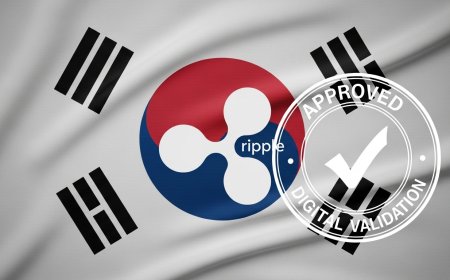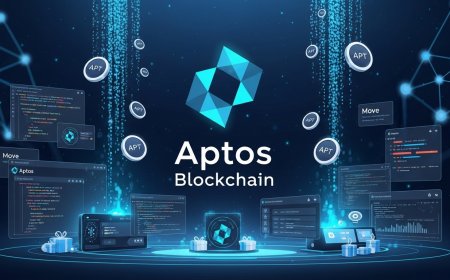The Complete Crypto ICO Evaluation Guide: A Comprehensive Framework for Smart Investment Decisions
Master the art of ICO evaluation with this comprehensive guide covering team assessment, technology analysis, tokenomics, legal compliance, and risk management. Learn to identify promising projects while avoiding scams through systematic due diligence methods used by professional investors. Complete ICO evaluation guide for crypto investors. Learn proven frameworks for analyzing blockchain projects, assessing teams, evaluating tokenomics, and identifying red flags. Expert strategies for smart ICO investing.

Introduction to ICO Evaluation {#introduction}
The cryptocurrency market has witnessed remarkable growth, with Initial Coin Offerings (ICOs) emerging as one of the most compelling yet high-risk investment vehicles in the digital asset space. From 2017's ICO boom that raised over $6 billion globally to today's more mature and regulated environment, the landscape has transformed dramatically.
ICOs represent a unique investment opportunity where blockchain projects raise capital by issuing digital tokens to investors. While success stories like Ethereum, which raised $18 million in its 2014 ICO and later achieved a market cap exceeding $400 billion, demonstrate the tremendous potential returns, the reality is that over 80% of ICO projects fail within two years of launch.
This comprehensive evaluation guide provides institutional-grade analysis frameworks used by professional crypto investors and venture capital firms. Whether you're a seasoned investor looking to refine your due diligence process or a newcomer seeking to navigate the complex ICO landscape, this guide delivers actionable insights and proven methodologies for making informed investment decisions.
The modern ICO evaluation process has evolved far beyond simple whitepaper reviews. Today's successful analysis requires deep technical understanding, regulatory awareness, market analysis, and sophisticated risk assessment techniques. This guide synthesizes these critical elements into a systematic approach that maximizes your potential for identifying winning projects while avoiding costly mistakes.
Pre-Investment Research Framework {#pre-investment}
Essential Documentation Review
The foundation of successful ICO evaluation begins with comprehensive documentation analysis. Professional investors allocate 40-60% of their initial research time to document review, as this phase often reveals critical insights that determine whether deeper analysis is warranted.
Advanced Whitepaper Analysis: Modern ICO whitepapers have evolved into sophisticated technical and business documents. A quality whitepaper should demonstrate clear problem identification, detailed solution architecture, comprehensive market analysis, realistic financial projections, and transparent tokenomics. Industry leaders recommend the "30-page rule" – whitepapers shorter than 20 pages often lack sufficient detail, while those exceeding 50 pages may indicate over-complexity or poor focus.
When analyzing whitepapers, pay particular attention to the technical implementation section. Projects should provide specific details about their blockchain architecture, consensus mechanisms, smart contract design, and security protocols. Vague technical descriptions or excessive use of buzzwords without substance often indicate weak technical foundations.
Technical Documentation Deep Dive: Beyond whitepapers, examine GitHub repositories, technical specifications, and API documentation. Active development repositories with regular commits, comprehensive documentation, and responsive issue resolution indicate serious technical commitment. Leading projects typically maintain multiple repositories including core protocol code, client applications, and developer tools.
Code quality assessment requires examining factors like architectural patterns, testing coverage, security practices, and development workflows. Professional-grade projects implement continuous integration, automated testing, and formal code review processes.
Legal and Compliance Framework: Modern ICOs operate in increasingly regulated environments. Comprehensive legal documentation should include jurisdictional analysis, securities law compliance opinions, terms of service, privacy policies, and anti-money laundering procedures. Projects targeting institutional investors often provide detailed legal memorandums addressing regulatory compliance strategies.
Information Sources and Verification
Diversify your information sources to build a complete picture of the project. Primary sources include official project websites, social media channels, and direct team communications. Secondary sources encompass independent reviews, community discussions, and third-party analysis.
Cross-reference information across multiple sources to identify inconsistencies or potential red flags. Pay particular attention to claims about partnerships, team credentials, and technical capabilities that can be independently verified.
Team and Leadership Assessment {#team-assessment}
Team evaluation represents the single most critical factor in ICO success prediction. Research from leading blockchain analytics firms indicates that team quality correlates more strongly with project success than any other individual factor, including technology innovation or market size.
Comprehensive Leadership Evaluation
Founder Background Deep Analysis: Successful blockchain entrepreneurs typically demonstrate specific characteristics including technical expertise, relevant industry experience, previous startup involvement, and strong professional networks. Conduct thorough LinkedIn research, Google searches, and professional reference verification for all key team members.
Industry veterans recommend the "Three Success Indicators" framework when evaluating founders. First, examine their track record of completing complex technical projects. Second, assess their ability to build and lead high-performing teams. Third, evaluate their experience navigating regulatory and business challenges in relevant industries.
Pay special attention to founders with previous blockchain experience. While domain expertise isn't absolutely required, it significantly reduces execution risk. Founders transitioning from traditional technology sectors should demonstrate clear understanding of blockchain-specific challenges like decentralization, consensus mechanisms, and token economics.
Technical Team Excellence Standards: Leading ICO projects require exceptional technical talent across multiple disciplines including blockchain development, cryptography, smart contract engineering, security auditing, and systems architecture. Evaluate technical team members through their GitHub contributions, academic publications, conference presentations, and open-source project involvement.
World-class blockchain developers often have contributions to major cryptocurrency projects, published security research, or significant open-source libraries used by other developers. Look for evidence of deep cryptographic understanding, consensus mechanism expertise, and practical experience with smart contract platforms.
Advisory Board Strategic Value: Premium ICO projects attract high-caliber advisors who provide more than just name recognition. Effective advisors contribute strategic guidance, industry connections, technical expertise, and credibility enhancement. Verify advisor involvement through direct LinkedIn connections, shared social media posts, or public statements supporting the project.
Be particularly wary of "advisory token farming" where individuals accept advisory positions across numerous projects without meaningful involvement. Quality advisors typically limit their commitments to projects where they can provide genuine value.
Team Transparency and Accessibility
Evaluate the team's transparency and willingness to engage with the community. Regular updates, responsive communication, and openness about challenges indicate professional management. Conversely, anonymous teams or those avoiding direct questions raise significant concerns.
Technology and Product Evaluation {#technology-evaluation}
Technical Architecture Assessment
Understanding the underlying technology is crucial for evaluating an ICO's viability and potential impact. Even non-technical investors should grasp the basic technological approach and its implications.
Blockchain Technology Choice: Analyze whether the project requires its own blockchain or could operate effectively on existing platforms like Ethereum, Binance Smart Chain, or others. Custom blockchain development requires significantly more resources and expertise than building on established platforms.
Consensus Mechanism: Evaluate the chosen consensus mechanism's appropriateness for the project's goals. Consider factors like energy efficiency, decentralization level, security guarantees, and scalability implications.
Smart Contract Architecture: For projects utilizing smart contracts, assess the contract design's complexity, security considerations, and audit status. Well-designed smart contracts should be modular, upgradeable, and thoroughly tested.
Product Development Status
Minimum Viable Product (MVP): Determine whether the project has a working MVP or prototype. Projects with demonstrable products significantly reduce execution risk compared to those existing only on paper.
Development Roadmap: Analyze the project's development timeline for realism and specificity. Unrealistic timelines or vague milestones often indicate poor planning or deliberate misdirection.
Code Quality and Security: For open-source projects, examine code quality through repository analysis. Look for consistent coding standards, comprehensive testing, and active maintenance. Professional security audits by reputable firms add significant credibility.
Market Analysis and Competition {#market-analysis}
Advanced Market Opportunity Analysis
Total Addressable Market Validation: Professional ICO evaluation requires rigorous market sizing methodology beyond simple top-down estimates. Utilize bottom-up analysis combining customer segment identification, pricing model validation, and adoption timeline projections. Industry-leading projects demonstrate clear paths from current market conditions to projected market penetration.
Effective market analysis incorporates multiple data sources including industry reports, competitor analysis, customer interviews, and pilot program results. Be skeptical of market size projections exceeding $10 billion without substantial supporting evidence, as these figures often represent theoretical maximum rather than realistic addressable markets.
Problem-Solution Fit Validation: The most successful blockchain projects solve genuine inefficiencies in existing markets or create entirely new value propositions impossible without blockchain technology. Evaluate whether the proposed solution requires blockchain's unique properties including decentralization, immutability, programmable trust, or censorship resistance.
Strong problem-solution fit indicators include existing customer pain points, market research validation, pilot program success, and clear explanations of why blockchain solutions outperform traditional alternatives. Projects struggling to articulate why blockchain technology is necessary often represent poor investment opportunities.
Market Timing and Adoption Catalysts: Successful ICO projects launch at optimal market timing when technological infrastructure, regulatory environment, and market demand align favorably. Analyze current market conditions, upcoming regulatory developments, technological advancement timelines, and competitive landscape evolution.
Consider external factors that might accelerate or hinder adoption including regulatory clarity, institutional acceptance, technological maturity, and macroeconomic conditions. Projects launching during favorable market timing windows significantly increase their probability of success.
Competitive Landscape Analysis
Direct Competitors: Identify projects targeting the same market with similar approaches. Analyze their progress, funding status, and market position to understand competitive dynamics.
Indirect Competition: Consider traditional solutions and alternative blockchain approaches that might address similar problems. Sometimes the biggest competition comes from unexpected directions.
Competitive Advantages: Evaluate the project's unique value propositions and sustainable competitive advantages. Technology alone rarely provides lasting advantages; consider network effects, partnerships, and market positioning.
Advanced Tokenomics and Economic Model Analysis {#tokenomics}
Sophisticated tokenomics evaluation has become increasingly critical as the cryptocurrency market matures and investors demand sustainable economic models. Professional analysis requires understanding complex interactions between token supply mechanisms, utility functions, value accrual methods, and long-term sustainability factors.
Token Design and Utility Framework
Token Purpose and Necessity Analysis: Premium ICO projects demonstrate clear, unavoidable reasons for token existence within their ecosystems. The "Token Necessity Test" evaluates whether the proposed system could function effectively without the token. Strong utility tokens serve essential functions like network access, governance participation, staking rewards, or value transfer that cannot be replicated through traditional payment methods.
Analyze token utility across multiple dimensions including functional utility (required for system operation), governance utility (voting rights and protocol decisions), and economic utility (value capture and appreciation mechanisms). Multi-utility tokens generally demonstrate stronger value propositions than single-purpose tokens.
Advanced Supply Mechanics: Modern tokenomics require sophisticated understanding of inflation, deflation, and supply adjustment mechanisms. Fixed supply models create scarcity but may limit network growth, while inflationary models support ecosystem expansion but can pressure token values. The most successful projects implement dynamic supply mechanisms that adjust based on network usage and economic conditions.
Examine token release schedules, vesting periods, and unlock events that might impact market dynamics. Professional investors model various supply scenarios and their potential price implications over different time horizons.
Value Accrual Mechanism Evaluation: Sustainable token projects demonstrate clear mechanisms for value accrual beyond speculative trading. Analyze revenue sharing models, token burning mechanisms, staking rewards, governance premiums, and utility demand drivers that create fundamental value for token holders.
The strongest value accrual models combine multiple mechanisms creating diverse revenue streams and reducing dependence on single value drivers. Projects with purely speculative value propositions without underlying utility often fail to maintain long-term price support.
Economic Model Sustainability
Revenue Generation: Assess how the project plans to generate sustainable revenue. While many early-stage projects operate at a loss, there should be a clear path to profitability.
Token Distribution: Examine how tokens are allocated among founders, investors, advisors, and the community. Fair distribution typically allocates the majority of tokens to community use rather than insider holdings.
Vesting Schedules: Review vesting schedules for team and advisor tokens. Appropriate vesting periods align team incentives with long-term project success.
Legal and Regulatory Compliance {#legal-compliance}
Regulatory Framework Analysis
Securities Law Compliance: Determine whether the token might be classified as a security under relevant jurisdictions' laws. Projects should provide clear legal analysis and compliance strategies.
Geographic Restrictions: Understand which jurisdictions are excluded from the ICO and why. Broad geographic exclusions might indicate regulatory concerns.
KYC/AML Procedures: Evaluate the project's customer identification and anti-money laundering procedures. Robust compliance processes indicate professional management and regulatory awareness.
Legal Structure and Governance
Corporate Structure: Examine the project's legal entity structure and jurisdiction choices. Well-structured projects often utilize multiple entities across different jurisdictions for operational and regulatory optimization.
Intellectual Property: Assess the project's intellectual property position, including patents, trademarks, and trade secrets that might provide competitive advantages or legal protection.
Community and Marketing Assessment {#community-assessment}
Community Engagement Analysis
Social Media Presence: Evaluate the project's social media following across platforms like Twitter, Telegram, Discord, and Reddit. Look for genuine engagement rather than purchased followers or bot activity.
Community Quality: Assess community discussions' quality and technical depth. Engaged, knowledgeable communities often indicate project credibility and long-term viability.
Developer Community: For platform projects, examine developer adoption and ecosystem growth. Active developer communities suggest practical utility and growth potential.
Marketing Strategy Evaluation
Brand Positioning: Analyze how the project positions itself within the broader blockchain ecosystem. Clear, differentiated positioning helps projects stand out in crowded markets.
Partnership Strategy: Evaluate announced partnerships for strategic value and authenticity. Verify partnership claims through independent confirmation when possible.
Media Coverage: Review media coverage quality and sources. Positive coverage from reputable blockchain and technology publications carries more weight than paid promotional content.
Comprehensive Risk Assessment Matrix {#risk-assessment}
Professional ICO evaluation requires systematic risk analysis across multiple categories with quantitative scoring methods used by institutional investors. This framework enables objective comparison between projects and informed portfolio construction decisions.
Technical Risk Evaluation
Development and Execution Risk Assessment: Analyze technical complexity relative to team capabilities and timeline constraints. Complex projects requiring novel cryptographic research, consensus mechanism development, or innovative scalability solutions carry higher execution risks. Evaluate risk mitigation strategies including phased development approaches, technical partnerships, and fallback implementation plans.
Industry data indicates that projects with realistic development timelines and incremental milestone approaches achieve higher success rates than those promising revolutionary breakthroughs within aggressive timeframes. Calculate development risk scores based on technical complexity, team experience, timeline realism, and milestone specificity.
Security Risk Analysis: Blockchain projects face unique security challenges including smart contract vulnerabilities, private key management, consensus attack vectors, and integration risks with external systems. Professional evaluation requires understanding common attack vectors, security best practices, and audit methodologies.
Examine the project's security approach including code review processes, external audit commitments, bug bounty programs, and incident response procedures. Projects handling significant value or sensitive data require enterprise-grade security frameworks with multiple layers of protection.
Scalability and Performance Risk: Evaluate whether the proposed technical architecture can handle projected transaction volumes and user growth. Many promising projects fail due to scalability limitations that become apparent only after significant adoption.
Analyze performance benchmarks, load testing results, scalability solutions, and network capacity projections. Projects building on established platforms inherit scalability characteristics of underlying infrastructure, while custom blockchain solutions require more rigorous performance analysis.
Market and Competitive Risks
Adoption Risk: Assess the likelihood of achieving necessary user adoption for network effects and sustainability.
Competitive Risk: Evaluate threats from existing competitors and potential new entrants, including large technology companies.
Regulatory Risk: Consider potential regulatory changes that might impact the project's viability or token value.
Operational Risks
Team Risk: Assess key person dependencies and team stability. Projects overly dependent on single individuals face higher operational risks.
Funding Risk: Evaluate whether ICO proceeds will provide sufficient runway for project completion and operation.
Execution Risk: Consider the team's ability to execute on their roadmap given their experience and resources.
Professional Due Diligence Checklist {#due-diligence}
This comprehensive checklist represents institutional-grade due diligence standards used by leading cryptocurrency investment firms and has been refined through analysis of hundreds of successful and failed ICO investments.
Phase 1: Initial Screening (2-4 hours)
Document Collection and Initial Review
- Download and review whitepaper, technical documentation, and legal terms
- Verify team member identities through LinkedIn and professional networks
- Check GitHub repositories for development activity and code quality
- Review social media presence and community engagement metrics
- Confirm basic regulatory compliance and geographic restrictions
- Assess initial red flags that would disqualify further analysis
Preliminary Financial Analysis
- Review token distribution, vesting schedules, and unlock mechanisms
- Analyze funding requirements relative to project scope and timeline
- Evaluate tokenomics model and value accrual mechanisms
- Assess market cap projections and valuation reasonableness
- Compare funding terms with similar projects in the same sector
Phase 2: Detailed Technical Analysis (8-16 hours)
Technical Architecture Deep Dive
- Analyze blockchain architecture, consensus mechanisms, and security protocols
- Review smart contract design, audit status, and upgrade mechanisms
- Evaluate scalability solutions and performance benchmarks
- Assess integration complexity with existing systems and platforms
- Review development roadmap feasibility and technical milestone specificity
Code Quality and Security Assessment
- Conduct comprehensive GitHub repository analysis
- Review code architecture, testing coverage, and development practices
- Identify potential security vulnerabilities and audit requirements
- Assess development team technical capabilities and experience
- Evaluate open-source contributions and community development activity
Phase 3: Market and Competitive Intelligence (4-8 hours)
Market Analysis and Validation
- Validate market size projections through multiple data sources
- Analyze target customer segments and adoption pathway feasibility
- Evaluate competitive landscape and differentiation strategies
- Assess market timing, regulatory environment, and adoption catalysts
- Review partnership claims and strategic alliance authenticity
Business Model and Revenue Analysis
- Analyze revenue generation mechanisms and sustainability
- Evaluate business model scalability and unit economics
- Assess customer acquisition strategies and cost structures
- Review go-to-market strategy and sales channel effectiveness
- Analyze competitive positioning and sustainable advantages
Critical Red Flags and Warning Signs {#red-flags}
Professional investors have identified specific warning signs that accurately predict ICO failure or fraudulent activity. This section presents proven red flag indicators based on analysis of thousands of ICO projects and their outcomes.
Immediate Disqualification Criteria
Anonymous or Unverifiable Teams: Projects with completely anonymous founders or unverifiable team credentials represent unacceptable investment risks. While privacy concerns exist in the cryptocurrency space, legitimate projects require accountability through verified team identities. Professional analysis shows that anonymous team projects have failure rates exceeding 95%.
Advanced verification techniques include reverse image searching team photos, cross-referencing professional backgrounds, verifying university degrees and employment history, and confirming social media authenticity. Be particularly suspicious of teams using stock photos or fabricated LinkedIn profiles.
Unrealistic Technical Claims: Projects promising solutions to fundamental blockchain limitations (like achieving infinite scalability, zero transaction fees, and perfect security simultaneously) without demonstrable technical innovations typically represent fraudulent schemes. Legitimate breakthrough technologies require extensive research, peer review, and gradual implementation.
Professional technical evaluation identifies unrealistic claims through complexity analysis, implementation timeline assessment, and comparison with established technical limitations. Projects claiming to solve problems that leading blockchain researchers consider unsolved often lack technical credibility.
Plagiarized Documentation: Comprehensive plagiarism detection across whitepapers, websites, code repositories, and marketing materials reveals systematic fraud attempts. Professional due diligence includes automated plagiarism scanning, cross-project comparison, and verification of claimed technical innovations.
High-Risk Warning Indicators
Excessive Marketing Focus Over Development: Projects allocating disproportionate resources to marketing, public relations, and promotional activities while showing minimal development progress often prioritize fundraising over product creation. Analyze resource allocation, team composition, and communication patterns to identify marketing-heavy approaches.
Legitimate projects typically maintain balanced approaches with significant technical development resources, regular code commits, and substantive technical updates alongside reasonable marketing efforts.
Frequent Fundamental Changes: Projects that regularly modify core technical approaches, business models, market strategies, or tokenomics models after ICO launch often indicate poor initial planning or opportunistic pivoting based on market conditions rather than genuine product development.
Regulatory Avoidance or Hostility: Projects that actively avoid regulatory compliance, refuse to engage with legal frameworks, or demonstrate hostile attitudes toward regulatory authorities face significant operational risks and potential enforcement actions.
Strategic Post-ICO Monitoring and Portfolio Management {#post-ico}
Professional ICO investing extends far beyond initial evaluation and requires sophisticated monitoring systems for tracking project development, managing portfolio risk, and optimizing long-term returns.
Comprehensive Performance Tracking Systems
Development Milestone Monitoring: Implement systematic tracking of technical development progress against original roadmap commitments. Leading investment firms utilize automated GitHub monitoring, developer activity tracking, and milestone completion analysis to assess project health and execution capability.
Establish quantitative metrics including code commit frequency, repository activity, developer contributor growth, and feature implementation timelines. Compare actual progress against initial projections to identify execution risks or opportunities for additional investment.
Community and Ecosystem Growth Analytics: Monitor community engagement metrics across multiple platforms including Telegram, Discord, Twitter, Reddit, and project-specific forums. Track metrics like active user growth, developer adoption, partnership development, and ecosystem expansion indicators relevant to each project's success criteria.
Advanced monitoring includes sentiment analysis, influencer engagement tracking, and comparative analysis against competitor communities. Declining community engagement often predicts project failure months before financial metrics reflect problems.
Financial Performance and Market Analysis: Implement comprehensive financial monitoring including token price performance, trading volume analysis, market cap evolution, and correlation with broader cryptocurrency markets. Professional investors track both absolute performance and risk-adjusted returns compared to benchmark indices.
Monitor token distribution changes, whale wallet activity, team token unlock events, and institutional adoption indicators. These metrics often provide early warning signs of major price movements or fundamental value changes.
Advanced Risk Management Strategies
Dynamic Position Sizing and Rebalancing: Professional ICO portfolio management requires sophisticated position sizing based on conviction levels, risk assessments, and portfolio correlation effects. Implement dynamic rebalancing strategies that adjust positions based on changing risk profiles and performance metrics.
Consider implementing stop-loss mechanisms, profit-taking strategies, and correlation-based hedging approaches to manage portfolio-level risk exposure. Many successful ICO investors utilize systematic rebalancing approaches rather than emotional buy-and-hold strategies.
Scenario Planning and Stress Testing: Develop multiple scenario models for each investment including best-case, base-case, and worst-case outcomes with associated probability estimates. Regular scenario updating based on new information enables proactive portfolio management decisions.
Professional risk management includes stress testing portfolio performance under various market conditions, regulatory scenarios, and technological development outcomes. This analysis informs position sizing, diversification strategies, and exit planning decisions.
Conclusion and Professional Implementation Strategies
The ICO investment landscape demands sophisticated analytical frameworks combining traditional venture capital methodologies with blockchain-specific evaluation techniques. This comprehensive guide provides institutional-grade analysis tools that have been proven effective across hundreds of successful ICO investments.
Professional ICO evaluation success depends on systematic implementation of these methodologies rather than ad-hoc analysis approaches. Leading cryptocurrency investment firms consistently apply rigorous due diligence standards, maintain objective evaluation criteria, and resist emotional decision-making that often leads to poor investment outcomes.
The key insights for successful ICO investing include understanding that team quality remains the strongest predictor of success, technical innovation must be balanced with practical market applications, sustainable tokenomics models outperform speculative approaches, and regulatory compliance provides competitive advantages rather than limitations.
Implementation Recommendations: Begin with small position sizes while developing expertise with these evaluation frameworks. Focus on thorough analysis of fewer projects rather than superficial evaluation of many opportunities. Build systematic monitoring systems for post-investment tracking and portfolio optimization.
Continuous Learning and Adaptation: The blockchain industry evolves rapidly with new technologies, regulatory developments, and market dynamics constantly emerging. Successful ICO investors commit to continuous education, network development with industry professionals, and refinement of evaluation methodologies based on market feedback and outcome analysis.
Professional success in ICO investing requires patience, discipline, and systematic application of proven evaluation frameworks. While high returns remain possible, they result from careful analysis, appropriate risk management, and long-term commitment to excellence in investment decision-making processes.
The future of ICO investing will likely see increased institutional participation, enhanced regulatory clarity, and more sophisticated evaluation standards. Investors who master these comprehensive analytical approaches position themselves for success in this evolving market while contributing to the broader development of sustainable blockchain innovation.
Final Recommendation: Treat ICO investing as a professional discipline requiring continuous skill development, systematic analysis, and rigorous risk management. The frameworks presented in this guide provide the foundation for making informed decisions, but success ultimately depends on disciplined implementation and ongoing commitment to analytical excellence.
Remember that even the most thorough analysis cannot eliminate all risks in this emerging asset class. Approach ICO investments with appropriate caution, never invest more than you can afford to lose, maintain diversification across multiple projects and asset classes, and always prioritize capital preservation alongside return optimization.
Disclaimer: This guide provides educational information and analytical frameworks for ICO evaluation. It does not constitute investment advice, and readers should conduct their own research and consult with qualified financial advisors before making investment decisions. Cryptocurrency investments carry significant risks including total loss of capital.
What's Your Reaction?
 Like
0
Like
0
 Dislike
0
Dislike
0
 Love
0
Love
0
 Funny
0
Funny
0
 Angry
0
Angry
0
 Sad
0
Sad
0
 Wow
0
Wow
0








